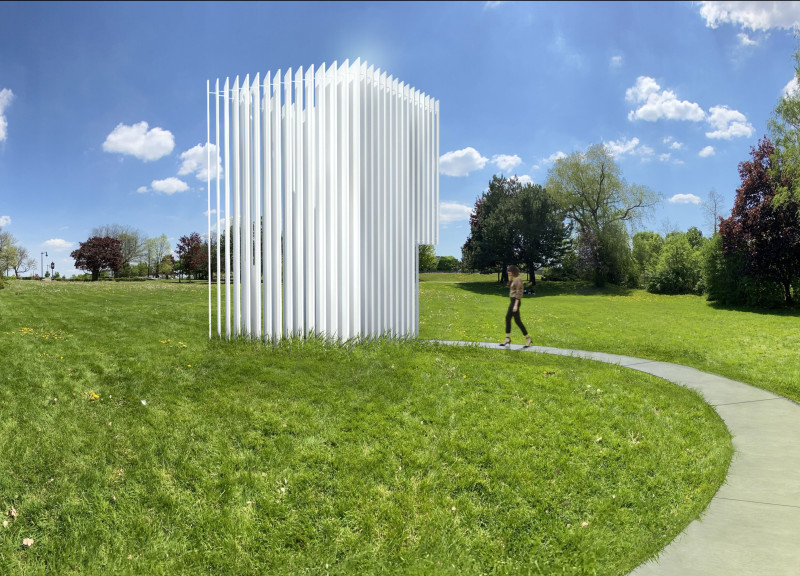5 key facts about this project
The Last Genocide Memorial is designed as a contemplative space dedicated to honoring the victims of genocide. It is located in a peaceful park setting that encourages reflection. The design focuses on creating a thoughtful atmosphere, steering clear of emotional prompts or narratives. The intention is to allow visitors to engage with the theme of genocide in a personal and profound way.
Design Elements
The exterior primarily features steel panels, which are 3 cm thick and painted white. This choice emphasizes clarity and strength, aligning with the memorial's purpose of remembrance. The smooth surfaces create an inviting environment that supports meditative thought. By avoiding heavy ornamentation, the design reinforces its message, allowing the architecture to speak for itself.
Structural Integrity
Stainless steel pipes, with diameters of 5 cm and 3.5 cm, are used as structural elements. These pipes are mounted between the panels, providing both support and a minimalist aesthetic. This interaction between materials displays a careful balance of stability and simplicity, making the memorial both functional and respectful in its design.
Engagement with Memory
A key feature inside the memorial is an inscription made of letters embedded in the concrete pavement. This element serves as a permanent reminder of those who are honored here. It invites visitors to engage physically and emotionally with the site. The white concrete floor complements the inscription, creating a neutral space that focuses attention on the theme of remembrance.
Architectural Interaction
The faceted walls of the pavilion establish a connection with the outside world, creating a visual link between the living and the departed. This design approach embodies an important tension, where visitors feel a sense of separation yet are still invited to look into the context of the memorial. The emptiness within the pavilion serves to highlight the ongoing efforts required to understand and remember those who have suffered.
The careful combination of reinforced concrete and stainless steel results in a space that emphasizes themes of memory and absence. The layout and design elements work together to create an environment that is respectful and contemplative. It's a place where visitors can pause and engage thoughtfully with the history of genocide, encouraging deeper reflection on the past.






















































